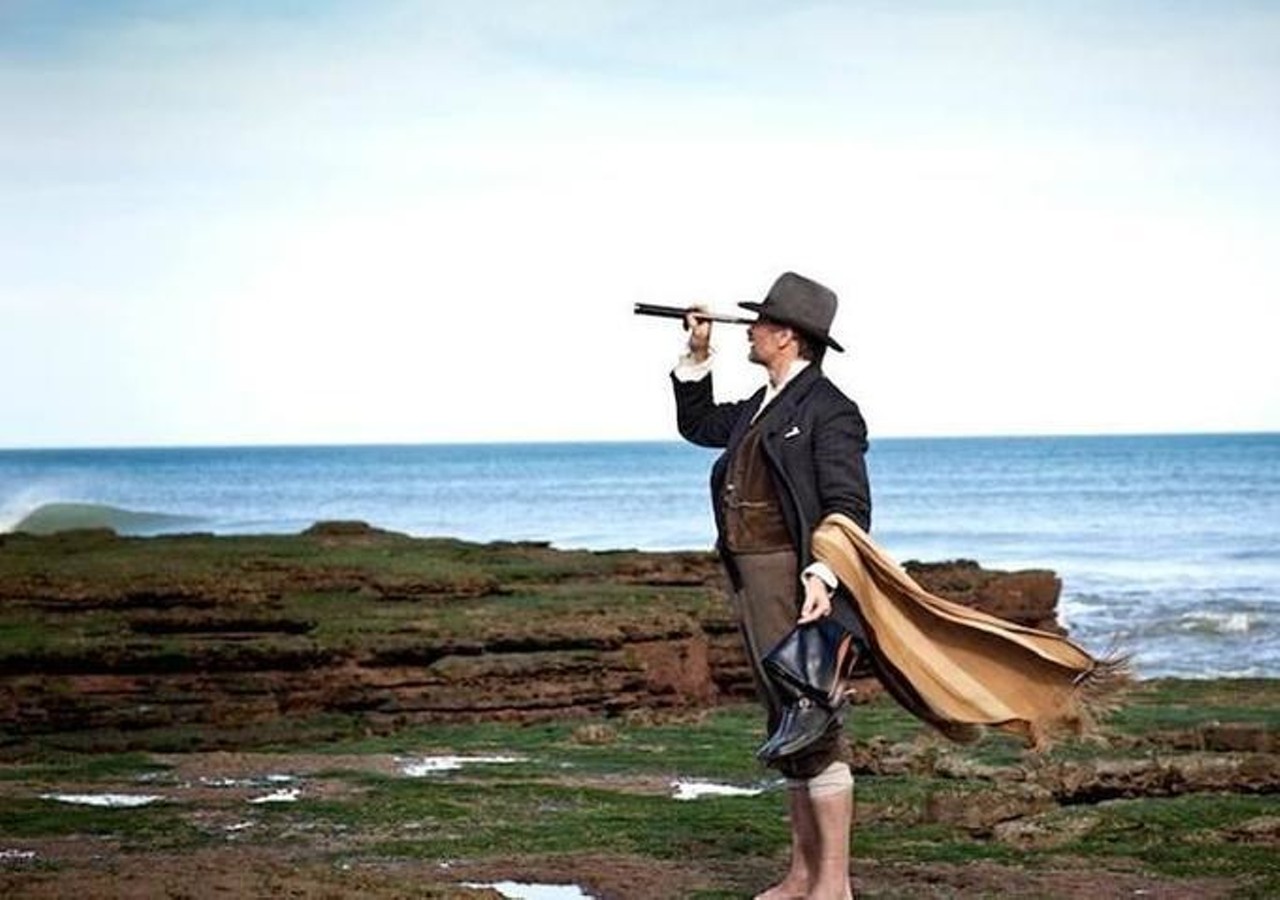By Chlotrudis Independent Film Society
Rating: 4.25 cats
Director: Lisandro Alonso

Country: argentina, brazil, france, germany, mexico, netherlands, united_states
Year: 2015
Running time: 109
IMDB: http://www.imdb.com/title/tt2514338/combined
Jason says: “JAUJA opens with an explanation of the title, a mythological land that was always somewhere over the horizon in Patagonia, although these things are always exaggerated. That’s probably the right ‘it’s not really totally real’ attitude to have with this movie, which doesn’t waste time in plunging its lead into a beautiful but sanity-destroying nightmare.
“That would be Gunnar Dinesen (Viggo Mortensen), a Danish engineer in Nineteenth-Century Argentina on a contract to work on a desert fort. He has brought his daughter Ingeborg (Viilbjørk Malling Agger) with him, but is alarmed when the much-older Lieutenant Pittaluga (Adrián Fondari) wishes to take her to the governor’s ball. Inge, on the other hand, has eyes for Corto (Diego Roman), and when they steal away into the desert, Gunnar pursues alone, despite warnings that doing so is madness.
“Right at the top of the film, Inge says she would like a dog that will follow her wherever she goes, and it’s easy to look at what follows and say she already has that. That wouldn’t really be correct, though; a dog is loyal and protective without question or apparent desire for itself, while Gunnar is clearly panicked at the idea of Inge growing up and making certain decisions for herself. He tends to initially state her age as fourteen rather than fifteen, fairly close to the line between a girl being considered a child and a potential bride in that time, and one of the totems he clings to when following her is a child’s toy. When the film is nearing its end and Gunnar’s viewpoint is perhaps becoming more hallucinatory, his fears don’t exactly center on finding his daughter dead.
“Getting into his head like that means spending a fair amount of time with Gunnar and nobody else, which is one of the things that makes Viggo Mortensen a real asset. There are others – he’s a producer on the film and composed what music appears toward the end – but he spends the bulk of his time on-screen, doing a fine job of showing Gunnar wearing down as the environment and a likely-doomed quest chip away at him. It’s what he’s wearing down from that in s some ways process most interesting, with Gunnar coming across as superficially quiet and kind, but there’s an intensity to him that he doesn’t know what to do with, though it dribbles out at the wrong moments more often than it explodes. Mortensen’s haunted look throughout the film keeps Gunnar easy to sympathize with even though he and filmmaker Lisandro Alonso never let the audience forget that he is in a bad situation in large part due to his own foolishness and stubbornness.
“The cast around him is often sparse, but generally quite good, with Viilbjørk Malling Agger doing a fine job of demonstrating how easily different people can see immaturity and capability in Inge. Diego Roman and Adrián Fondari play obvious extreme cases of the men who would show an interest in Inge, but that sort of simplicity is not a detriment to this sort of movie, and they get the point across while not coming across as standard parts; Esteban Bigliardi is entertaining as the one sitting somewhat above the fray. Ghita Nørby is excellent when she shows up late in the movie, after it’s been a while since someone spoke and their interaction needs to be a very specific sort of tentative.
“That’s when the film truly gets strange, although Alonso and co-writer Fabian Casas tend to go for a surrealism that isn’t opaque: It’s actually fairly clear what’s going on as the film takes unusual turns, though that makes it no less interesting. It’s fairly impressive just how well they remain on-point considering how often this sort of movie will often wind up all over the place, as it becomes a vision quest. This one’s got an odd epilogue (I think meant as a contrast to the way Ingeborg is portrayed as still a child at fifteen), just after coming back to a line from not much earlier in not-so-subtle manner, but better that than seeming randomness.
“The script can sometimes feel like an excuse to show off the scenery, but that’s no bad thing – the Argentine landscapes are gorgeous. Alonso and cinematographer Timo Salminen choose to not just shoot it in roughly the squarish Academy ratio (4:3), but put a frame with rounded corners around it, creating an effect that is akin to slides or home movies, especially since they favor fairly static shots. The sharp, vivid images in what looks like 8mm projection and occasional camera movement in what look like animated slides creates a bit of a conflict in the head, making a film that seems a step off from reality just a bit stranger.
“At times, JAUJA seems like the love child of Werner Herzog’s environmentally induced madness and Alejandro Jodorowsky’s trips through the already-unsettled wastelands. If that’s the case, I wonder whether its relative clarity of theme helps or hurts it – do you want it to be more completely mysterious? It’s an interesting question to ponder; JAUJA may not be quite so captivating as similar movies, but it may be more solid. At any rate, it’s still no ordinary film, and some nice work from Mortensen and Alonso. 4.25 cats
“Seen 13 June 2015 in the Brattle Theatre (first-run, DCP)”
